- Merrill Carbine Patch Box
- Merrill Carbine, Lock Plate First Type
- Merrill Carbine Front Sight
- Merrill Carbine, Half Cocked
- Merrill Carbine, First Type
- Merrill Carbine, Breech Lever Open Position
- Merrill Carbine, First Type Breech Plunger
- Merrill Carbine, Button Type Latch
- Merrill Carbine, Breech Lever
In the fall of 1861 after correcting some quality issues the Ordnance Department trail board found with the plunger,
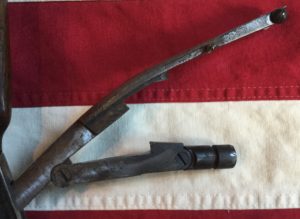
Merrill Carbine, First Type Breech Plunger
The first 600 Carbines were issued to General Stoneman’s calvary consisting of the 11th Pennsylvania and the 1st New York Mounted Rifles. December 24th 1861 the Ordnance Department placed an order for an additional 5,000 Merrill Carbines at $30.00 each.
The Old Model Merrill’s were .54 caliber percussion Carbines and measured 37 3/8”overall length, weighed 6 pounds 8 ounces, the bullet weighed 400 grains with 40 grains of powder, serial numbers were stamped vertically behind the hammer and on the lever latch, the barrel band, trigger guard, butt plate and patch box were all made of brass.
The New Models differ from the previous in that the Lock Plate is stamped to the rear of the hammer the date 63,64 plus it has a small eagle forward of the hammer, no patch box and the lever latch was changed to the round button type latch.
A total of 14,255 carbines and 770 rifles along with 5,502,000 cartridges at a cost of $105,779. Calvary Regiments that were issued Merrill’s were the 27th Kentucky, 1st, 5th, and 18th New York, 1st New Jersey, 7th Indiana 1st and 3rd Wisconsin, 11th, 17th and 18th Pennsylvania and the 1st Delaware.
During the 1863-1864 Ordnance Department survey of officers using the various breech loading Carbines in field use 91 officers responded on the Merrill. The results were Best – 5, Good – 14, Fair – 13, Poor – 16, Worthless – 43.
With little business in post war the Merrill Company closed it doors in 1869.
The Merrill carbine featured is an Old Model with the New Model round button type lever latch.
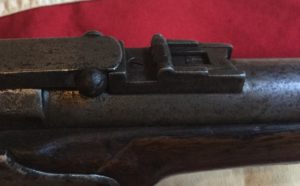
Merrill Carbine, Button Type Latch
This was not a arsenal stored weapon, it’s clear this carbine saw hard use and was fired many of times, oh if only it could talk.
Thanks for stopping by and if you have any questions about this weapon or any of the other weapons in my arsenal feel free to contact me at civilwararsenal@yahoo.com attn: Gene West.

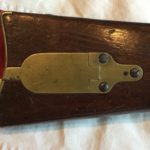
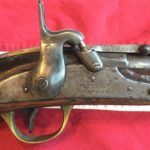
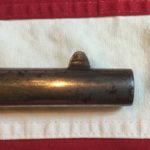
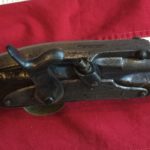
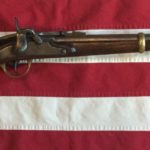
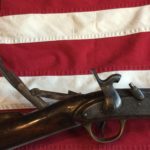
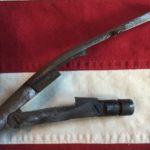
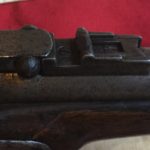
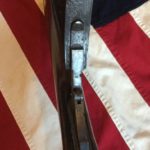
I inherited an 1847, don’t know a lot about it. I think it’s a 56 or 58 caliber. Can’t seam to find out any information on what it’s worth. Not that I’m getting rid of it, but not sure if I want to take it out in the woods this next season. I’d appreciate any information you can give me on it, thanks. Greg
Greg,
Below see the attachments I’ve included. It explains better then I could most any questions (including values) you may have about the Model 1841 U.S. Percussion Rifle. Your example seems to be in very good condition, if it were me I wouldn’t take it out and hunt with it…….but that’s just my opinion.
Regards Gene West
Your Merrill carbine # 11468 was almost doubtless issued to a Nebraska cavalry unit. I have a list of eight Merrills between # 11139 and 11555 , so likely about 400 or so were issued to Nebraskans, yours included.
email me privately for a little more information
John, wanted to thank you for the information you’ve researched and provided me about my Merrill Carbine. I would have never guessed that it would have been issued to someone from Nebraska…..in fact I didn’t even know there were men who served from the Territory of Nebraska, it was admitted into the Union in March 1867…..hmmmm.
Anyway thanks for the information, I know it can be a thankless job researching…….I get discouraged all the time, but it’s moments like this that I become encouraged…..
Best Regards, Gene West
Gene, we exchanged emails several months back. Would you be able to send me some photos of the part assembly number on the lever backside, plunger arm backside, plunger face, and anywhere else you see it? I’ve had my tribute website up almost 9 months now, and am going thru a major update on my part assembly number research, trying to figure out if there’s any logic to how the Merrills were part assembly numbered. Thanks, Eric.
Eric,
I apologize for not responding sooner, however I’ve been disengaged from my blog site for personal reasons……but now I’m back. Below I’ve included some images of my Merrill that may help with your research. Let me know if there’s others you need.
Regards, Gene
Hi I have a Merrill Carbine SN 6413. Do you have any information on what unit it was issued to , Any help would be appreciated. Thanks Tim
My first Model Merrill has the SN#4551 and is in very good antique condition with strong rifling, everything works and is original and all the parts are correct. I picked it up at the Antique Firearms Show in Denver about 2003. I have no information on the firearm, I wish I did. It is rust free, no pitting, some browning and a clean weapon. I looks nice enough to fire, but I do not fire my antique firearms that this old, due to its lack of corrosion, I would say it has been out West for quite a while and kept in decent condition, other than that it is fine CW item, wish I had more information on itl
Bennett, please check out my website dedicated to James H. Merrill and his firearms. Would be great if you could send me hi-res photos of your 4551. Thanks, Eric.
https://jameshmerrilltribute.smugmug.com
Hi Gene,
I recently acquired a musket and know next to nothing about it. I’m usually pretty good at finding what I need on google but not in this case. I’ve found similar things but different. I found your info online and you seem to really know your civil war guns and maybe can give me some details. I acquired the gun from a farmer who said he received from his father in-law who was an architect. After designing a building many years ago in West Virginia it was given to him as a gift. It’s a Harpers Ferry rifle with the year 1852. The “action” on top is harder to read but seems to say “Something K. Merril Balto? patented July 1858” From what I’ve seen online I think it may be a model 1848 and a 69 caliber round ball? Any help you could provide would be much appreciated. In the process now of making a really cool display case.
Thank you,
Nick S
Nick,
Your weapon is not only unusual but rare. My research finds that it originally started out as a Model 1842 U.S. Percussion Harper’s Ferry made Musket in .69 caliber Approximitly 103,000 were made….this does not make it rare, however what does make it rare is in 1861-62 James H. Merrill altered about 300 long rifles from muzzle loaders to breech loaders to help speed up the loading and firing.
Merrill had minimal success in selling the US Government breech loading Carbines and rifles throughout the war and I’m guessing this was his experimental attempt to convert old obsolete weapons for the U.S. Government at a fraction of the cost to manufacture new ones……apparently it was a failed attempt.
Below I will include an attachment that will help you understand history and valuation of your weapon. Please understand I am not an appraiser, I’m an enthusiast. But the attachment is from “Flaydermans Guide To Antique American Weapon” considered by many to be the leading reference book for collectors.
It’s a wonderful American weapon, please do not clean it…..it’s perfect the way it is.
i know of a gentleman ( Eric Wojcieszak) who is writing a book on Merrill weapons and I was hoping you would allow me to share your contact information with him. I’m certain he would be interested in using your weapon as an reference example.
Kind Regards, Gene West